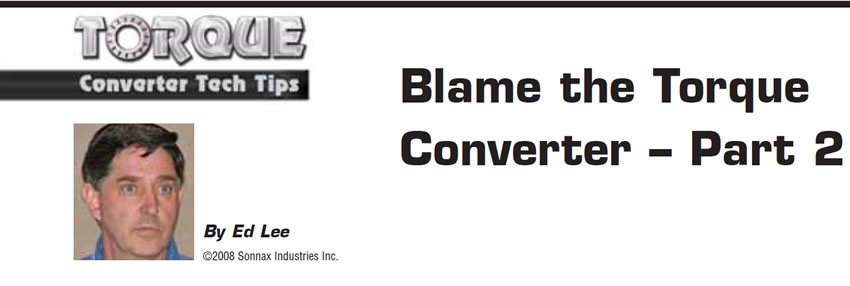Orifice Control within the Converter, Part 2
Most torque-converter rebuilders understand how oil flow within the converter harnesses engine torque and helps drive the vehicle. Unfortunately, many rebuilders have little knowledge of the many secondary paths and functions of converter oil flow.
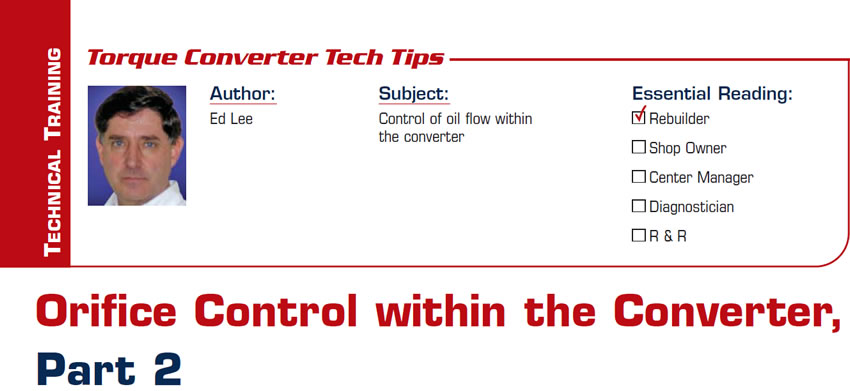
Orifice Control Within the Converter
Converter rebuilders want to know why some of the pistons have the orifice and some do not. The answer to this question begins with understanding why the orifice was used in the first place. The orifice was drilled through the piston to help cool the mass of the converter. The TCC-release passage is open to exhaust when the converter is in the TCC-apply mode. Metered oil, which is allowed to bypass the piston by way of the orifice, carries some heat away from the converter.

Change May Be Good – But Be Careful
In the following situations each converter builder made what he believed to be a single change. For each of them, the change did not seem to cause any problems at first. Unfortunately, devastating long-term consequences occurred in both situations because they failed to realize that they had made more than one change.
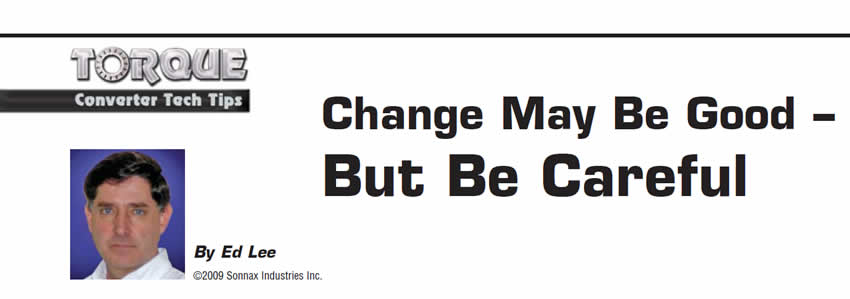
Cummins Diesel TCC Shudder: a New Twist
A 2001 Dodge Ram 2500 4×4, with a Cummins diesel engine and a 618 transmission, was brought to a transmission shop with a complaint of TCC shudder. Three to four months prior to coming to the shop, the customer noticed a change in the TCC-apply feel. He said that the TCC apply had suddenly become more aggressive or abrupt. The condition had worsened over the course of three to four months, until the start of the shudder issue.

What Is the Correct Name? Part II
In 1955 the automotive industry finally standardized the shift quadrant on all vehicles. From that time forward, all shifters would read from left to right (or front to back) and the order would be: Park, Reverse and Neutral, followed by the Drive ranges.
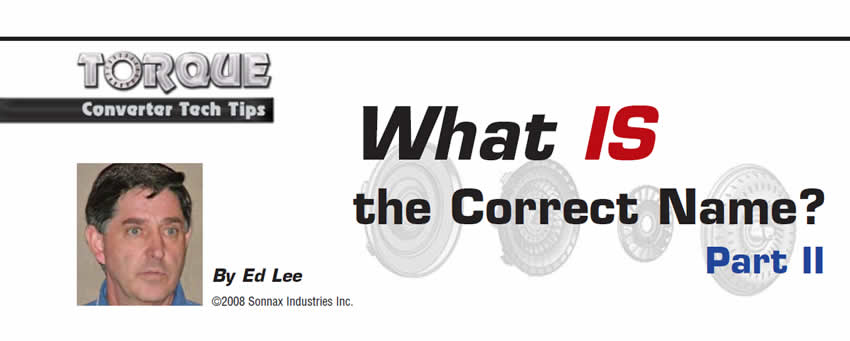
What IS the Correct Name?
When you are ordering torque-converter parts from your supplier, it is important to be able to communicate your wants and needs to your salesperson. Frustrations run high on both sides when the purchaser asks for and receives a clutch when his intention was to buy a friction ring.
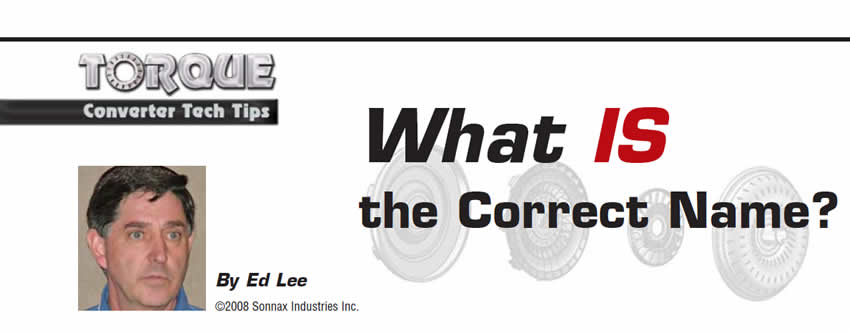
Internal Clearance
“Internal clearance” is the space between the impeller and the turbine in an assembled torque converter (Figure 1).
Hydraulically, it is the distance that the oil travels from where it exits the vanes of the impeller to where it enters the vanes of the turbine. Some rebuilders use the term “internal clearance” incorrectly. They use it to refer to the clearance between the internally stacked components of the converter. The correct term for the clearance between the stacked components is “end play.”
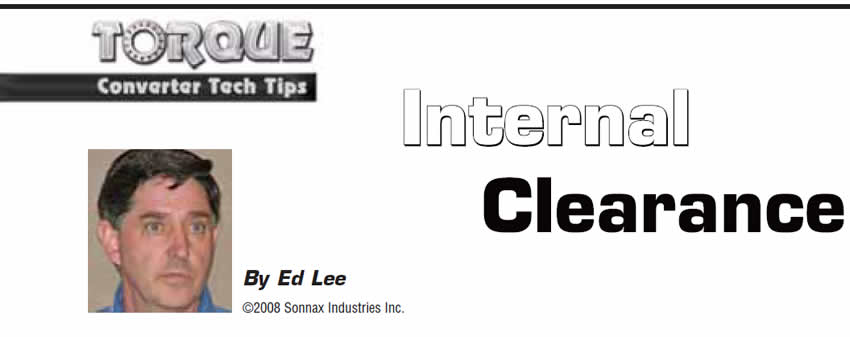
Mystery P0741 Code
A 2003 Ford F-350 4X4 was brought to a transmission shop in Eugene, Ore. The customer complaint was an intermittent P0741 code. The code did not seem to occur when the vehicle was driven locally but happened every time it was taken on a longer trip. The customer also noticed that the code would set whenever any additional load was placed on the vehicle. The additional loads included traveling in hilly terrain or pulling a trailer.
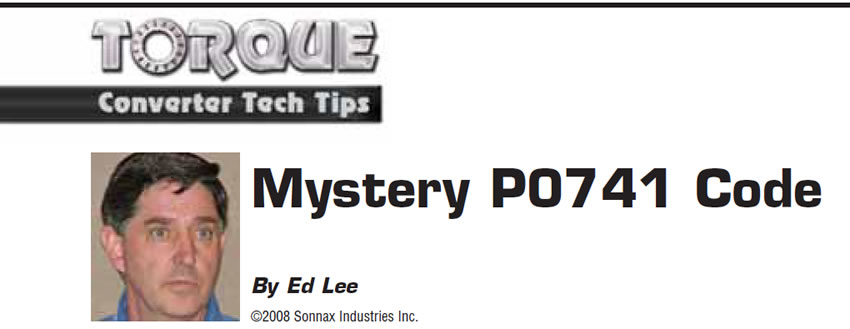
TCC Apply
The debate about whether to use a grooved or smooth friction lining to rebuild a converter originally equipped with a grooved lining has been going on since the day grooved linings first arrived at torque-converter shops. Those advocating a grooved replacement lining always seemed to have the upper hand because they used the very strong argument that “it is the same as OE.”
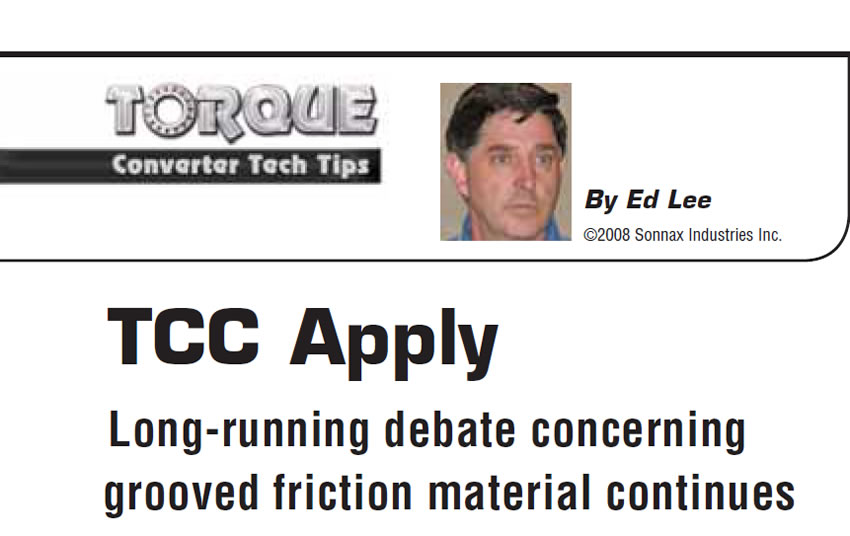
More Centerline Issues
Maintaining the proper centerline during the torque-converter rebuild process is very important. How well the centerline was maintained during the process can be measured by how much balance weight needs to be added at the end of the process.

Centerline Issues: TCC Frictions Bonded Off Center
For several decades the importance of the torque-converter centerline has been hammered home by Don Randolph of DACCO Inc. Don’s sentiments on this subject have been echoed by the torque-converter original-equipment manufacturers (OEMs). In fact, every OEM torque-converter print starts with a true axial centerline, which serves as the reference point for all axial measurements.

Blame the Torque Converter, Part 2
Last month, in Part I of “Blame the Torque Converter,” a 2001 Volkswagen Jetta and a 2002 Toyota Tundra were both thought to have faulty torque converters. Both vehicles had TCC-related trouble codes (the Jetta had a 740 code and the Tundra had a 770 code).
